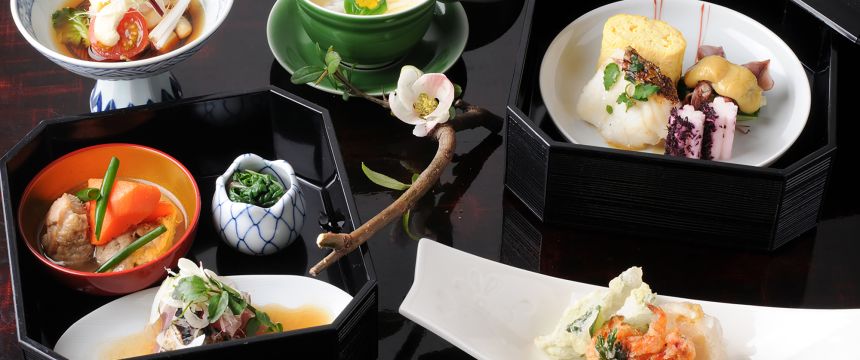Tatsuno, Hyogo Prefecture - Kansai
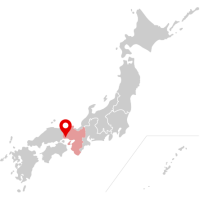
Travel to southwestern Hyogo Prefecture in western Japan, where the Ibo River flows through the prefecture’s Harima area on its way to the Seto Inland Sea. The river is also known as Mother River for its role in nurturing the area for a variety of industries, including somen.
Somen, one of Japan’s three most popular noodle varieties, has a long history in the Harima area, particularly in the city of Tatsuno. It is there that you’ll find Ibonoito Museum Somen-no-Sato, which is dedicated to this thin, wheat noodle and is operated by Ibonoito, one of Japan’s leading brands of somen. Visit the museum to learn about somen’s journey from ancient China to modern Japan and about the delicate process of making the noodle—as well as to discover its refreshing flavor, of course.
Somen’s Secrets!
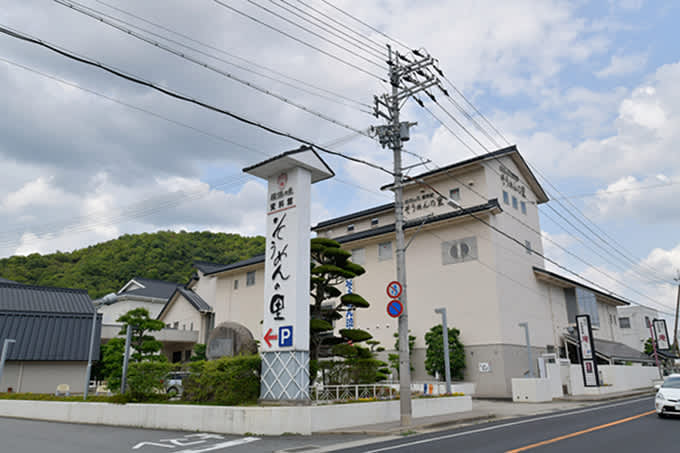
Within the world of somen, there are three varieties considered to be particularly esteemed: Nara Prefecture’s Miwa somen, Kagawa Prefecture’s Shodoshima somen, and Hyogo Prefecture’s Banshu somen. Ibonoito somen is of the Banshu variety, Banshu being the former name of the region where it is produced.
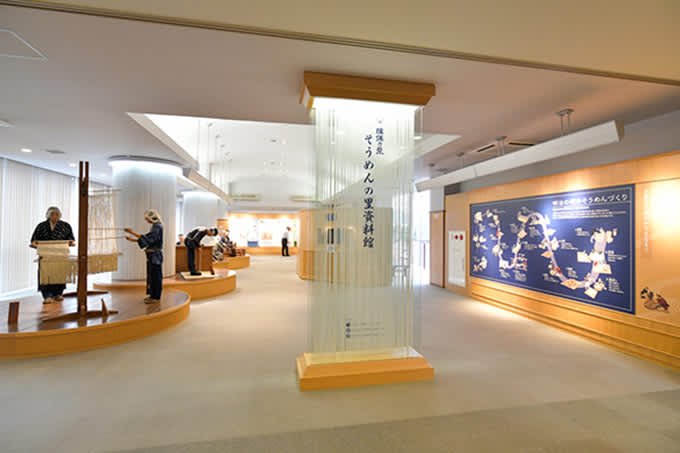
Making somen, regardless of the variety, is a hands-on, high-skill process where dough is kneaded, stretched thin, and then stretched thinner still. At Ibonoito Museum, you’ll be drawn into the world of somen-making with detailed displays and demonstrations—and you might even have the chance to try your hand at stretching the noodles.
The Surprisingly Deep History of the Simple Somen Noodle

Head for the second floor of the museum to discover the historical roots of somen. The exhibit is separated into zones for easy understanding and begins with the noodle’s cultural history.
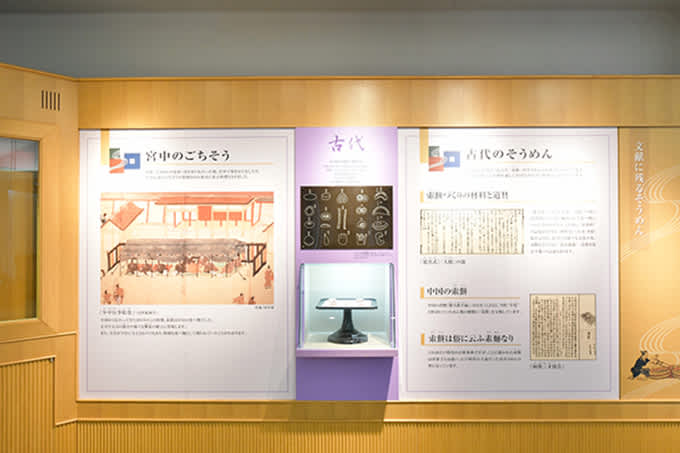
Despite being one of Japan’s three great noodles, somen traces its ancestry to China’s Tang dynasty (618–907). During this period, Japanese envoys made several trips across the sea, creating ties, acquiring knowledge—and on one trip, bringing back a variety of karagashi, a deep-fried pastry that would in time become today’s somen.
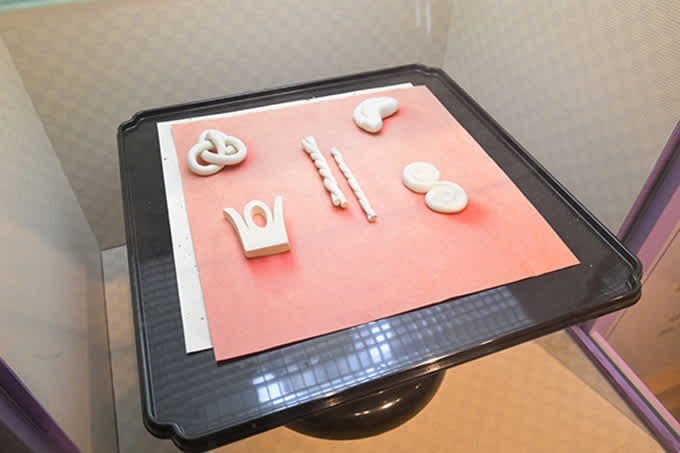
The pastry, called sakubei, was made of wheat and rice flour that was kneaded with water and stretched into shapes before being dried. Looking at the recreated sakubei, it is plain to see that this somen prototype had a long road to travel before becoming the noodles we know today.
Move along through the exhibit to discover how the area’s dry winters, plentiful clean water, and easy access to salt in nearby Ako made it the perfect place for somen-making to flourish.
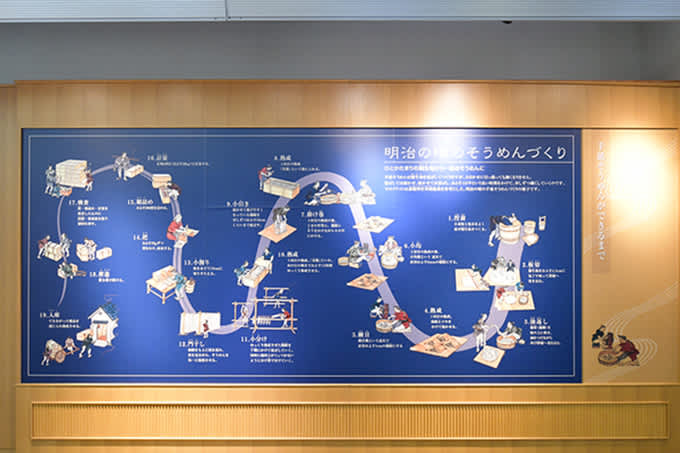
And flourish it did. In fact, an early reference to somen in the area can be found in historical documents belonging to Ikaruga Temple, not ten kilometers away from Ibonoito Museum. The documents, which date from 1418, mention “saumen,” and it seems as though this early somen had already taken on the noodle’s modern shape. Unfortunately, the path that led sakubei to become “saumen” has been lost to history.
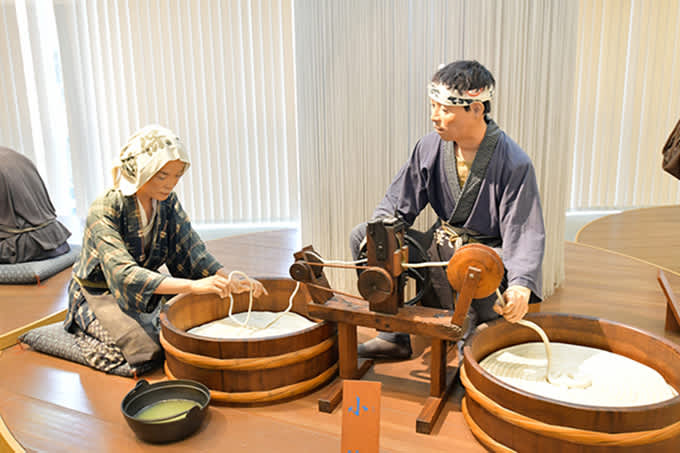
Somen production began in earnest in the Edo period (1603–1867), and in 1887, the predecessor of the Hyogo Prefecture Tenobe Somen Association was formed to protect the quality of the local product. Seven years later, in 1894, members of the association created a unified trademark, giving birth to the Ibonoito brand.
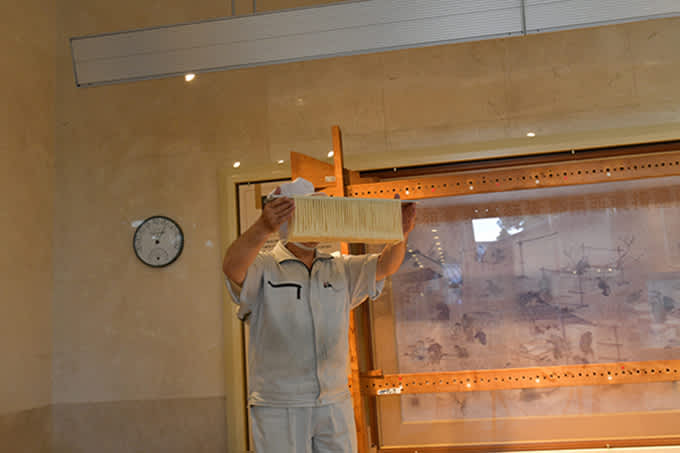
Harder Than It Looks!
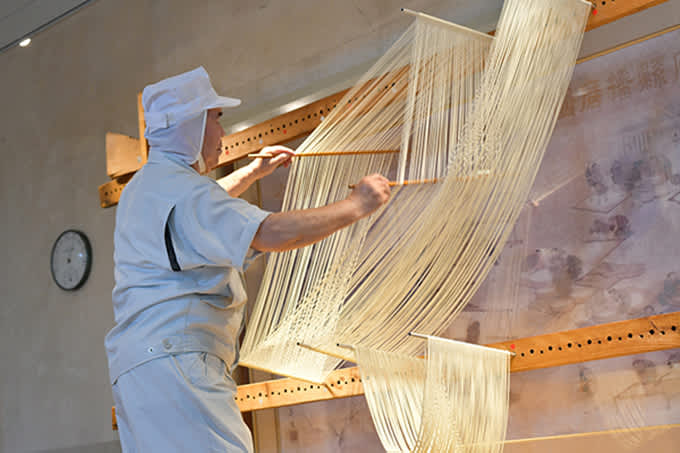
Find your way to the demo corner on the first floor, where five times a day a somen craftsman demonstrates how noodles are stretched so thin. Notice the length of the noodles to start—approximately fifty centimeters—and then admire the nimble handwork that stretches those noodles to more than three times that length. This step in the noodle-making process is a race against time, because the drier the somen becomes, the harder it is to stretch.
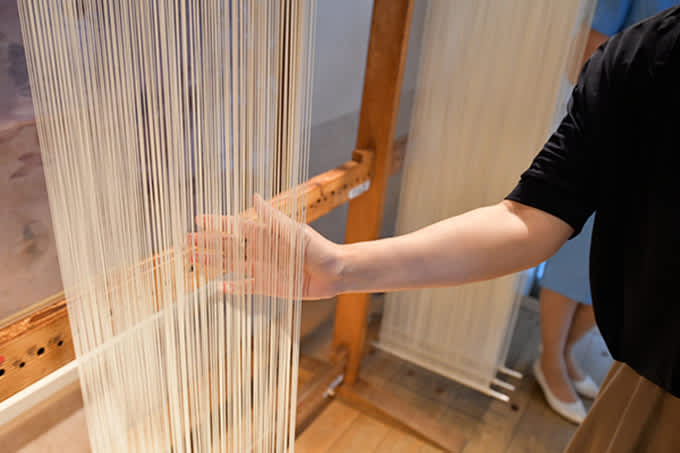
The finished noodles, deftly handled with chopsticks, are 160 centimeters long. Care to give it a try? Visitors get a chance to handle the somen with chopsticks after each demonstration. It’s harder than you think! The noodles are incredibly elastic in texture and require a firm hand—but not so firm that the noodles snap.
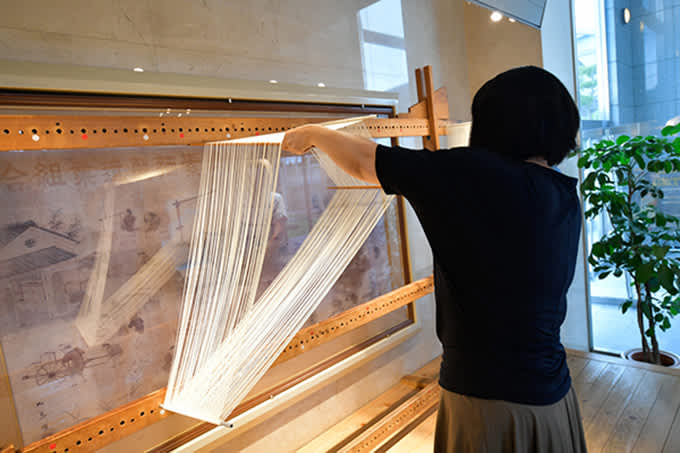
The demonstration shows just one of the many steps in somen’s journey from dough to noodle. The dough is actually stretched several times, with craftsmen carefully twisting the dough as it is stretched. Between the stretching steps, the somen is left to mature. It’s a multistep process that takes quite a bit of time as well as great skill.
Somen-Tasting Time
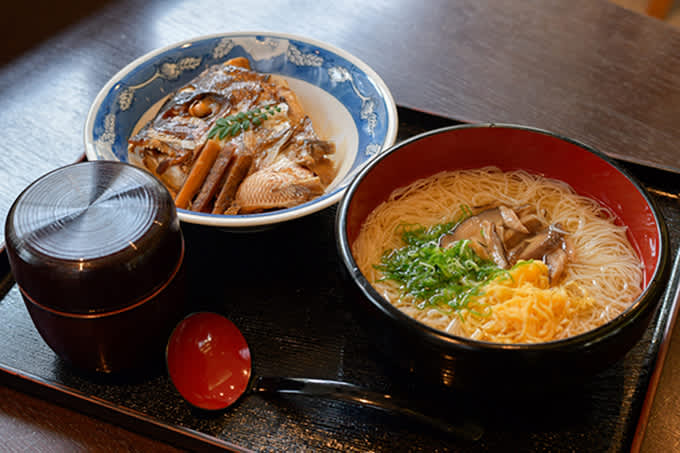
Bite-size somen samples are available on the first floor, but if you’re ready for a proper meal, head to Restaurant Iori, also located on the first floor. There, you’ll find an extensive menu heavy on somen.
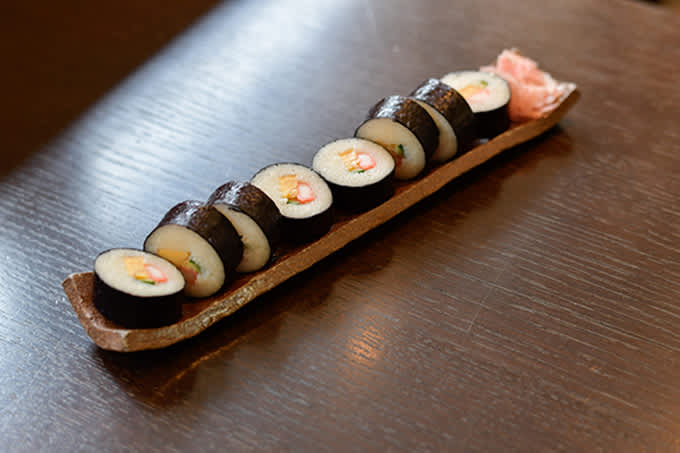
Try the noodles hot or cold with various toppings and dipping sauces. The menu is as creative as it is long, so try something out of the ordinary. A salad-noodle combo with pork is a popular choice, and there’s even a kind of rolled sushi that uses seasoned somen instead of rice!

Summertime visits come with a special treat—nagashi somen served in the museum’s courtyard. Pluck noodles out of flowing water and dip them in sauce for a fun, refreshing meal.
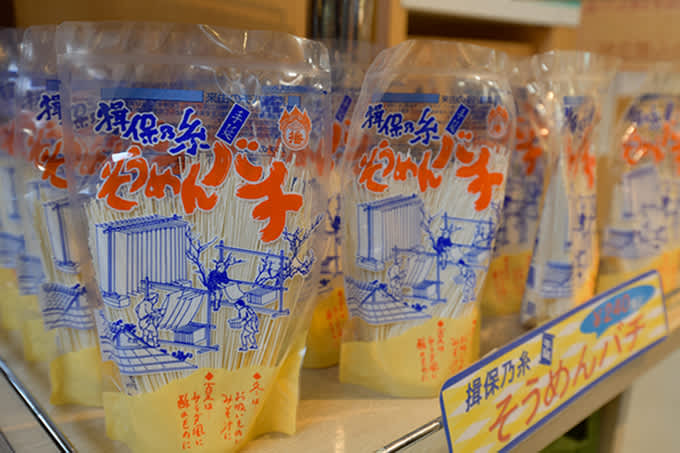
You’ll find a dizzying display of noodles to choose from in the gift shop, distinguishable by their colored-paper wrapping. Many items are only available locally, like somen-bachi, which is made from noodle ends that are attached to utensils during the production process, causing them to become flat.
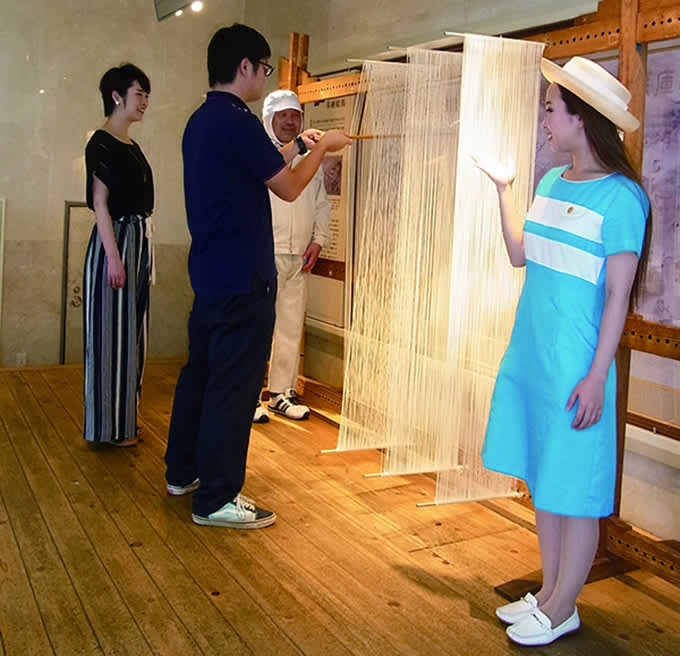
Add Ibonoito Museum to your itinerary for a delicious addition to your travels. Marvel at the incredible journey the somen made from Tang-dynasty China to modern Japan, and relish the delicate texture and light flavor characteristic of the noodle considered to be one of Japan’s best.
Contact Information
Ibonoito Somen
56 Okumura, Kamioka-cho, Tatsuno-shi, Hyogo 679-4101
How to Get There
Tatsuno is located in the Harima area of southwestern Hyogo Prefecture. The closest major train station is Himeji Station, which can be reached by Tokaido-Sanyo Shinkansen from Tokyo in approximately three hours and twenty minutes (Nozomi). From Himeji Station, board a Kishin Line train for Higashi-Hashisaki Station. It takes approximately twenty-five minutes to reach Higashi-Hashisaki. Ibonoito Museum Somen-no-Sato is located a ten-minute walk from Higashi-Hashisaki Station.
Recommended Itineraries
The historic castle town of Tatsuno is one of Japan’s many areas that capture the way of life from when Kyoto was the capital of Japan. Slip into the past as you wander narrow streets bordered by preserved samurai residences and white earthen storehouses, and explore the nearby Tatsuno Castle grounds. For more castle fun, head to nearby Himeji to admire Himeji Castle, a UNESCO World Heritage site. Slip back in time even further with a trip to Ako, where you’ll find relics and remains from Japan’s distant past, from the late Jomon period (3,500 years ago) right up until the Muromachi period (600 years ago).
Related Links
Hyogo Tourism Bureau (English)
Hyogo (English)
Map
Featured Cuisine
Somen noodles are standard summer fare in Japan. The thin, wheat noodles are often served chilled with dipping sauce for a light, refreshing meal. The noodles are also served hot in a noodle soup called nyumen. Somen, along with the thick wheat udon and buckwheat soba, is one of Japan’s three major noodle varieties.
-
Author
Author: Helen
Helen hails from a small town in Central Canada. Shortly after completing an honors degree in history, a desire to study karate in its birthplace drew her to Japan. Since arriving in 2006, she has earned her second dan in Goju-ryu karate, fallen head-first into Japanese culture by way of cross-cultural marriage, and written about Japan for a variety of publications. She loves traveling by Shinkansen, curling up under a heated kotatsu blanket, and eating anything with mochi.
All information is correct as of the time of writing.
Please check for the latest information before you travel.





















































